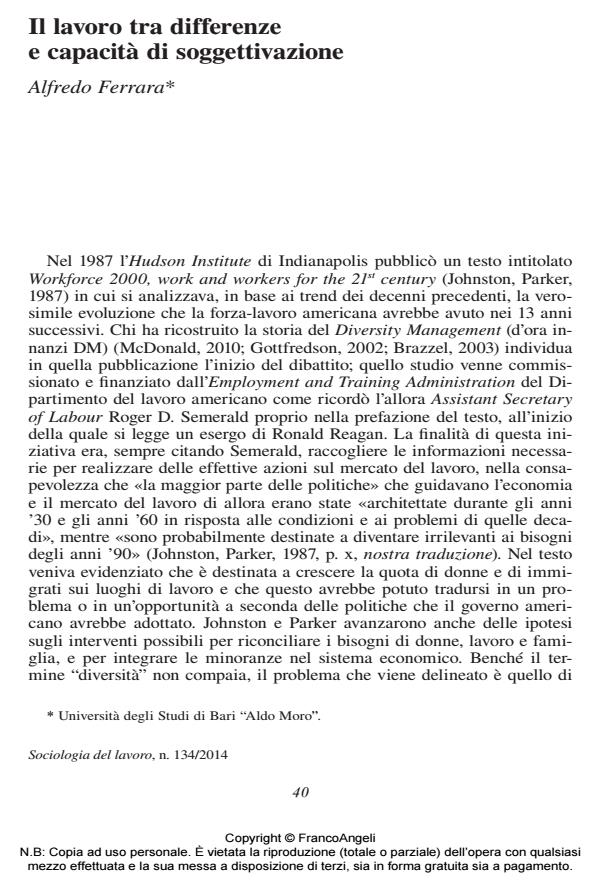Work between differences and ability of subjectification
Journal title SOCIOLOGIA DEL LAVORO
Author/s Alfredo Ferrara
Publishing Year 2014 Issue 2014/134
Language Italian Pages 14 P. 40-53 File size 109 KB
DOI 10.3280/SL2014-134002
DOI is like a bar code for intellectual property: to have more infomation
click here
Below, you can see the article first page
If you want to buy this article in PDF format, you can do it, following the instructions to buy download credits

FrancoAngeli is member of Publishers International Linking Association, Inc (PILA), a not-for-profit association which run the CrossRef service enabling links to and from online scholarly content.
In the course of the past decades western countries’ workforce has witnessed different phenomena that have deeply transformed its composition, making it more and more heterogeneous; diversity management is what enterprises have offered in response to these new needs; it thus recognizes their legitimacy and turns them into an opportunity in the dynamics of value creation. After offering a picture of the main demographic trends that testify this process of transformation, as well as a short history of diversity management practices, the article focuses on the ambivalence of these very practices. On the one hand, they provide citizenship to the various dimensions of personal and collective identity in workplaces. On the other hand, they take elements of material sharing away from new workers, thus contributing to challenging their ability of subjectification. In doing so, the paper also takes into account the main critiques that have originated from this debate.
Keywords: Keywords: needs, conflict, diversity, diversity management, identity, subjectivity
- Disuguaglianze, diversità e inclusione nei sistemi organizzativi in Italia e in Portogallo: la parola agli esperti Laura Falci, in SOCIOLOGIA E RICERCA SOCIALE 136/2025 pp.33
DOI: 10.3280/SR2025-136003
Alfredo Ferrara, Il lavoro tra differenze e capacità di soggettivazione in "SOCIOLOGIA DEL LAVORO " 134/2014, pp 40-53, DOI: 10.3280/SL2014-134002